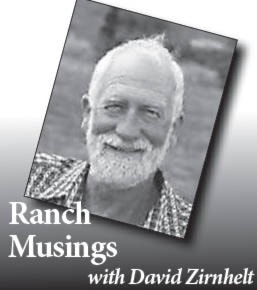Generally it is good news with prices holding above our cost to produce beef cattle for the market.
August prices were up and according to the main analyst we all listen to, there are market signals that prices might even go higher in the last quarter of the year.
This is good as prices have had a good run for several years. Droughts in parts of the U.S. and Canada have meant that a lot of cattle have been sold because of feed (pasture and hay) shortages.
Ranchers have not been rebuilding the breeding herd as quickly as the higher prices might suggest they should. Of course, one risks that the prices will drop as the numbers grow.
Profitable times can lead to profitable operations expanding to achieve the advantage of more cattle to sell when the margins are thinner.
READ MORE: Ranching as life long learning and making a difference
Margins are what remains after the direct costs which very with each unit of production, such as vet cost and feed costs are deduct from the selling price of the animal.
Where the problems of profitability happen is when our costs keep going up and prices tumble.
It doesn’t really matter if you are getting the highest price, as that is a gamble in the market. What matters in lower market times is what your cost of production is.
Since feed (hay and grain) are the biggest costs, the more you can pasture rather than feed them more costly processed feed, the cheaper it is to raise them. Too much investment in machinery and land can make overhead costs too high to pay out of what the cattle bring at market.
So low cost producers are in a much better situation to withstand a price drop when it comes. Better pasture management, selecting animals that thrive on poorer feed (dry grass instead of lush hay), more fertile cows and bulls so reproductive performance is higher: calving and survival rates.
Of course there are other risks, like weather, fire and flood, regulations, other land uses that affect costs of open range management.
READ MORE: Fresh faces, new information and new ranch enterprises
Fuel prices are a big item on any ranch now, so if you can keep your cultivation and haying costs down that is a big help for profitability. Much machinery is being geared to using less fuel, but just reducing the machinery operation is a cost saving.
There is proverbially never a dull moment in ranch management. But let us be relieved for however long the prices remain high.
But also, we must never let our guard down in the fight to keep costs under control and to reduce however we can. Lifestyle and business must also be balanced.
David Zirnhelt is a rancher and member of the Cariboo Cattlemen’s Association. He is also chair of the Advisory Committee for the Applied Sustainable Ranching Program at TRU.
